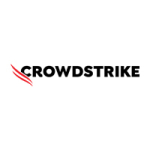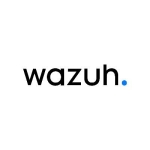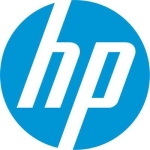What is our primary use case?
I'm managing the SIEM, but the SIEM is heavily integrated with 365 Defender and all the other components. Defender is a natural extension of Sentinel, and our entire SOC team leverages the solution. We utilize it daily for everything related to incident response from an advanced threat-hunting perspective.
We do some KQL-based threat hunting and have set up some custom detections built into the platform, so we can raise an alert about a threat when we see it. Right now, we're onboarding our server environment to push Defender for server agents to see what that looks like.
Defender is used widely by our SOC for everyday investigations. Our attack surface reduction teams use it for vulnerability information. Other teams at the company use the telemetry data, but it's primarily our SOC using it for incident response.
How has it helped my organization?
Defender XDR has simplified our security operations because we don't need to shift around various portals. If I respond to an initial access event involving phishing emails, I can go to the endpoint and the user's identity in one console instead of having four or five different tabs open for multiple products.
Since adopting Defender XDR, we haven't consolidated anything because the corporate leadership purchased the E5 license with all of Microsoft's other security solutions. All of those are still in play, but some of Defender's features are creeping into other spaces where it could potentially replace some of their products.
It allows things like indicator blocking. You can block file caches now. You can block URLs, domains, etc. We might have handled that somewhere else with DNS and stuff like that. We might be blocking domains or adding different intelligence to handle that from the endpoint perspective so the threats are stopped before they get to the network. There are certain functions that Defender might not necessarily take over, but it can augment the entire approach to that security design. It could replace those solutions, but I'm not one to have all my eggs in one basket. However, that's not my decision to make.
Having everything in a single pane of glass saves some time, but it's hard to quantify. It reduces the time needed to respond. It correlates the data in a certain way that probably decreases time spent on manual data aggregation by about 30 minutes per incident. We can aggregate the logs from third-party solutions in Sentinel, run KQL queries there, and look at them together to make some assumptions. That's a significant time saving, but I don't think we're tracking that.
The way it gathers data is fundamentally different. It's all right here, and I don't need to do separate queries. I can look through the timeline and export the data to a CSV if I want to sift through the data. It likely reduces the time it takes to respond dramatically. One problem we have internally is that we can't deploy Defender for Endpoint on everything. I can't deploy it on a many legacy OS due to the compatibility. It's challenging to address those things when you get so used to having all of this telemetry. When working through that, the advantages of using the platform become clear. It incentivizes us to stop using some of those assets because we can't see anything on them the same way that it gets represented in the M365D. We don't have direct telemetry ingestion into the cloud portal where we can collect logs from all those assets.
What is most valuable?
The most valuable feature is probably the aggregation and correlation of the different telemetry points with Defender for Identity, Defender for Endpoint, and Defender for Cloud Apps. All of these various things are part of that portal. We've wanted that single pane of glass for years.
We've become early adopters of almost all of the features that they offer through the portal, so we've become good at working through the leading-edge quality of the new features and deciding whether or not we want to implement something in production based on that. We have a close relationship with Microsoft's team, and they present us with opportunities to enable new features, but all of the training is done internally. We have a close-knit team structured between our level two, level three and engineering team. And so we'll come together and say, "Here's this new thing we can do with Defender for Identity. We can reset users' passwords on-prem through the portal." We'll discuss these things and whether to implement them, but it's just our team.
Defender provides unified identity and access management. There's probably some more granularity that could happen within the existing access control model. You can apply default labels for security admin and this or that. It depends on how you design it. A lot of our security admins can do at-will actions. We want them to be able to do anything else requiring an elevated set of privileges that allow you to design roles or stuff related to assets or identities.
You have an audit trail for who's doing what, which is great. I think they could make the roles more granular. That would be ideal. Integrated identity and access management capabilities are core to the solution because you don't want people to have too much access. You want to control it to a point. We need people to be able to do what they need to, but I don't want everyone to have domain privileges because they can log into a domain controller through the portal.
These are the kinds of things the portal lets you do, like the interactive sessions with Defender for Endpoint. However, I would like to see a just-in-time access approach that allows me to do something, and once I'm done with the action, it shuts off that capability.
Defender feels restricted to Microsoft products, but if we augment its capabilities with Sentinel, you can pull all your third-party data sources and everything into the SIEM. That immediately adds a different value to the product. Having some level of normalization on the data helps, but the ability to take data from third-party sources and correlate it with Microsoft sources is beneficial.
The solution stops the lateral movement of advanced threats like ransomware if you set it up correctly and are willing to accept the possibility of false positives on automated isolation, app restriction, etc. It entirely depends on what your team can do with rule tuning and use case detection.
Our team does customized detections entirely based on what's happening in our environment. We have direct tuning capabilities. We don't have an automated isolation-based task applied to out-of-the-box rules. That would be scary. We do our best to ensure false positives don't happen. If they do, we can control the outcome and make sure it can tune out the false positives.
Defender can stop attacks and evolving threats because it can correlate data and make assumptions based on it. If you feed it all of your data, it will do an incredible job. It's dependent on your environment, but I think it does an excellent job of detecting perceived threats. At the same time, you still need a human being to monitor and tune it.
What needs improvement?
The advanced threat-hunting capabilities are phenomenal, and the security copilot enhances that, but some data elements could be better or have more context inside of the advanced tables themselves. The schemas feel a little limited to what they're building into the product. It's probably just a maturity thing. I imagine we'll see the features I want in the next year.
Once you've onboarded your servers to Defender, they're housed on Azure. When those things are brought into the 365 Defender portal, I can see clearly that some of those are Azure resources. There is a subscription and the resource group. That data doesn't exist in the tables. We don't want to run automated remediation against our domain controllers, but you can't exclude those using Azure resource tags. You can't tell it to exclude assets from this resource group.
That data doesn't exist inside the tables you use to build your thresholds or custom protections. I could see where they could improve the data they present to you in the tables. I assume that it will come with time. There's so much happening. Every time I open the portal, there's a new feature.
Buyer's Guide
Microsoft Defender XDR
December 2025
Learn what your peers think about Microsoft Defender XDR. Get advice and tips from experienced pros sharing their opinions. Updated: December 2025.
879,768 professionals have used our research since 2012.
For how long have I used the solution?
We have used Microsoft Defender XDR since earlier this year and prior to this the Microsoft 365 Defender solution. We were early adopters of the platform and changes to the different products being integrated.
How are customer service and support?
I rate Microsoft support seven out of 10. Sometimes, the support teams are great. However, sometimes we know more about the tool in some cases than the people we're talking to. We use it so heavily that our internal team has a better understanding of the toolset than the average SME should. We use it every day, so we live in the portal. I can't comment negatively or positively on the support. It depends. Sometimes, you might get somebody who knows what's going on, but in other cases, we have to figure out the solution on our own.
The worst thing I can think of is when we need to reclassify a domain that they've called incorrectly. In that situation, you send a request into the abyss. you never get a response, and it's like, okay. Do I have to keep checking back over and over again to see if this has been reclassified?
How would you rate customer service and support?
Which solution did I use previously and why did I switch?
We've experimented with other providers at this point, like Carbon Black. I think Defender meets the enterprise-grade criteria for our needs, but there are some nuanced differences between the solutions.
I think it's hard to compare due to the sheer volume of the E5 ecosystem in one location. No other tools have that. If you bundle all the Microsoft solutions, it doesn't make sense to compare them to third-party solutions. Defender stands out in terms of gathering data and the way it presents everything in the incident timeline. The only thing it could do better is the filtering capabilities when you're pulling back the data from the timeline.
What's my experience with pricing, setup cost, and licensing?
Data is expensive if we want to leverage the telemetry that exists within the 365 ecosystem and bring that into Sentinel. I can't pipe that data in without paying an ingestion cost. I know how much data exists in each one of the tables that are there, and it would cost a significant amount of money to bring that in.
What other advice do I have?
I rate Microsoft Defender XDR 10 out of 10. I don't know of anybody else that's even remotely close to doing what they're doing. It's reduced my work in terms of identifying things. I might be in a position where I'm engineering, but I'm still technically on the response team. I'm using the tool the same way, and it has gotten better and better every time they add something new.
Disclosure: My company has a business relationship with this vendor other than being a customer. Partners















